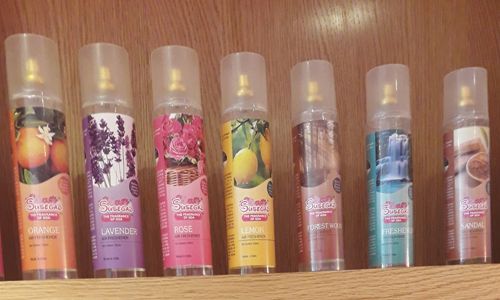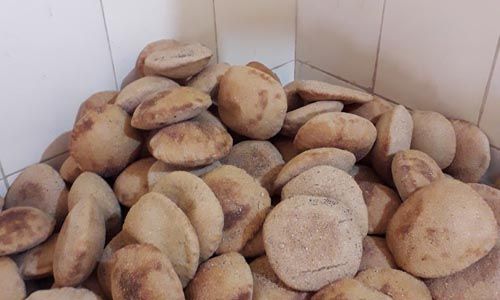The BJP government suddenly delisted the Talpona river in Canacona from a list of 11 polluted or partially (stretches) polluted rivers in the third week of January? It claims that ‘interventions’ by the Department of Panchayats (DOP) through ‘solid waste management’ did the trick or, should I be saying conjured up the magic. It's more likely as a result of NGT's March 31 deadline because this government has shown blatant disregard for the environment.
February 2, 2020
By Lionel Messias
What made the BJP government suddenly delist the Talpona river in Canacona (see picture) from a list of 11 polluted or partially (stretches) polluted rivers in the third week of January? Was it because of a certain March 31, 2020 deadline? Is it the well-exposed lack of will to protect Goa’s environment? Or, simply because this government is hell-bent on its version of development which is building huge bridges, six-lane roads, tall buildings; that it has no time for mundane things such as environmental protection? Just as an example: it is now planning the mother of all buildings in Patto.
The government has an action plan for rejuvenating polluted stretches in 11 rivers in the state. This was forced on it after the National Green Tribunal’s (NGT) directive to every State and UT to ensure that all sewage is treated by onsite remediation before March 31, 2020. States are also required to make sure the required sewerage treatment plants (STP) and drains are built and connected. The penalty for errant States is Rs 5 lakh per month for default in in-situ remediation and Rs 5 lakh per STP as penalty for failing to set up a STP.
The River Rejuvention Committee (RRC-Goa) approved the de-listing simultaneously agreeing to plans for cleaning up stretches of the Mandovi and Sal rivers (the latter is the worst affected). Certain stretches in the rivers are polluted and unsafe for bathing. Significantly, the Central Pollution Control Board (CPCB) called out the stretches whose biochemical oxygen demand (BOD) was found to be greater than the permitted limit of less than 3.0 mg/L. The biochemical oxygen demand quantifies the amount of dissolved oxygen used by micro-organisms to decompose organic matter in water.
The rivers are: the Mandovi, Zuari, Sal, Talpona, Assonora, Bicholim, Chapora, Khandepar, Sinquerim, Tiracol and Valvanti and were classified under Criteria III, IV and V.
The state of our rivers
The CPCB considers BOD greater than or equal to 30mg/L to be Priority I, between 20-30 mg/L- Priority II, between 10-20 mg/L- Priority III, between 6-10 Mg/L- Priority IV and between 6-3 mg/L- Priority V. A BOD of less than 3mg/L is considered to be a healthy river. All the 11 rivers fall under the Priority III to V at least according to the NGT order available on the Net, which also shows that Goa submitted action plans for all 11 rivers. Priority I is the most severe and Priority V the least. It said one river came under Priority III, two under Priority IV, and eight under Priority V.
The CPCB tested water samples (with varying degrees of pollution levels) from Assonora to Sirsaim (Assonora river), Bicholim to Curchorem (Bicholim), Ponda to Opa (Khandepar), Pernem to Morjim (Chapora), along Candolim (Sinquerim), along Tiracol (Tiracol), Sankhali-Bicholim to Poriem (Valvanti), Curchorem to Madkai (Zuari), Pernem to Morjim (Chapora), Marcel to Volvoi (Mandovi), along Canacona (Talpona), and Khareband to Mobor (Sal).
The RRC’s lengthy report titled ‘Preparation of Action Plan for Rejuvenation of Polluted Stretches of Rivers in Goa’ March 2019 is available on the Net but only for river Tiracol and another river!
Waving the Magician’s Wand
What changed the government’s thinking on Talpona? It claims that ‘interventions’ by the Department of Panchayats (DOP) through ‘solid waste management’ did the trick or, should I be saying conjured up the magic.
The Goa Waste Management Corporation director Levinson Martins said in October 2019 that Salcete village panchayats must augment their dry waste collection, adding there was a huge gap between garbage generated and garbage collected. He pointed out to garbage seen even in water bodies! In December 2018 a volunteer organization called Goenkar was forced to collect piles of stinking garbage during an emergency situation and out of sheer frustration, volunteers dumped a few bags outside the Canacona Municipality Council in protest; a police complaint was filed against the NGO! In short the DOP minister Mauvin Godinho would sign any clean-chit if it helped his government exclude Talpona river from the list.
Interventions were made by the Directorate (in October 2019) of Health Services by issuing notifications to violators for discharging sewage. Ludicrious again! After the NGT order, its minister Vishwajit Rane said without revealing details that action had been taken against 100 violators (a mere 100!) for releasing sewage in rivers and water bodies. If he had penalized 1,000 violators it would still be the tip of the iceberg. He said the government had stopped the water supply to 82 domestic consumers and 17commercial establishments without revealing whether these were included in the 100. But, grant him the benefit of the doubt. Because, the NGT had ordered the government to issue a total of 4,240 individual notices. And as we know, the true figure could be several times that.



